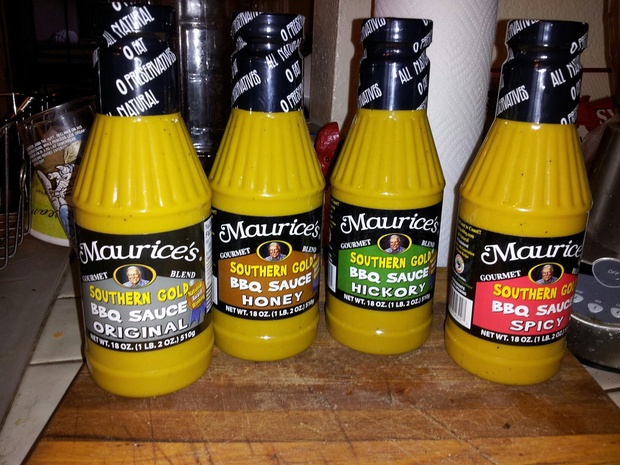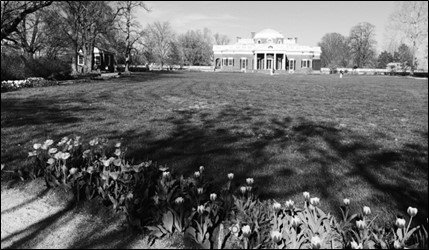A July 2017 article from Buzzfeed.com, the hallmark of all popular wisdom of our time, was entitled, “15 Things You’ll Understand If You’ve Ever Eaten At A White Friend’s House.”[i] In the article, a series of snarky memes and illustrative pictures were meant to communicate the idea that “white people” don’t know anything about “spicing up” their food. In other words, food made in the houses of Caucasians is bland. This is an extremely common stereotype, probably best exemplified in recent memory by the “thanksgivingwithwhitefamilies” hashtag that was trending all throughout last year’s Thanksgiving season. There’s no doubt that the 2017 Thanksgiving season will see similar viral phenomena castigating perceived Caucasian culinary fare.
So called “white people food” can be difficult to categorize. If you do a quick Google search you will come up with any number of articles that define it either as low income, highly processed cuisine[ii] or as pricey, “urban rooftop garden” hipster fare[iii]. For the purposes of our discussion, we will go with the former and more common definition, stressing the idea of “blandness.” The assumption is that “white people” boil the flavor out of their food, don’t use or at least don’t know how to use spices and rely primarily on store bought, overly processed items without variation (for example, putting ketchup and mayonnaise on everything). This would be, at least in an American context, juxtaposed to African-American, Hispanic and other immigrant culinary fare that is brimming with delicious spice and flavor. There are two fundamental flaws in this generalization. First, that the cultures and peoples who now embody what is defined as “white people” are not, at least at their roots, characterized by bland food. Second, that the generalization of “white people food” actually has nothing to do with ethno-cultural background, but instead is concerned with the suburban way of life.
Before addressing these two arguments, it’s first necessary to point out that the generalizations of “white” and “black” people, at least in specific cultural conversations, are not at all helpful or constructive. There are a host of “white” cultures, for example, that have little to nothing to do with each other outside of a somewhat similar skin tone. One would be hard pressed to point out the cultural similarities between Caucasians from the Caucasus Mountains area of Central Asia, who have been traditionally Muslim for the better part of 1,300 years, abstaining from both liquor and pork, from a Caucasian hog farmer in Scotland who ends his evenings with a glass of Scotch. The point being made is that there is an extremely wide variation of “white” people throughout the world. The exact same truisms hold for “black” cultures. There is a wide variety of belief, practice and lifestyle that can be found from North Africa, to Mozambique, to St. Lucia to Mississippi. While referential statements based on color can be helpful in police reports (white male, 6’3, 250 lbs…), they are not in making gross generalizations about culture, and the analysis of food is a cultural matter, as it is the embodiment of a way of life.
In a culinary context, it should additionally be noted that spicing is not the only thing that makes food flavorful. For thousands of years, people in various places throughout the world have either not had direct access to spices because of their geography (for example, those living above the Arctic Circle), or have simply not had any such variety to speak of. Food flavored with spices such as cinnamon, nutmeg, ginger, and even cracked pepper have traditionally been available only to those on or near the equator, or those who had the money and means to afford such luxuries – the rest of society had to either fare with what they had or come up with ways to get to where the spices were grown and sold (hence, the beginning of the Age of Exploration in the late 1400s). That being said, the food that individuals without means subsisted on should in no way be considered “bland.” On the contrary, much of the “poor” food would have been very delicious, as it continues to be in many third-world nations throughout the world even without access to diverse spices.
The principle is that the freshness of food is directly proportional to the amount spice used in it when considering how tasty it is. The Mongolian herders living in yurts on the Asian steppes cook a goat from the inside out by sowing up a “hot rock” inside it. There is no spice to speak of and the method is primitive, yet the result is succulent meat that melts in one’s mouth – a phenomenon made possible by thousands of years of practicing the perfect time to leave the rock inside the goat as it cooks in its own juices[iv]. Similarly, one has not truly tasted a banana until one has partaken of one that has ripened on tree – produce consumed where it has grown is far superior to that which is picked and then shipped. Picked before it has ripened on the tree, by the time it arrives to its destination, thousands of miles from its source, it has become bland.
The impact of suburbanization cannot be underestimated. It could be argued that the move from the country (and even the city) to the suburbs for countless families across the Western world in 2nd half of the 20th century has had the greatest and most negative effect on the quality and taste of food. If one lives in the country, they typically eat what is common to their area. Thus an Indiana farmer eats a diet high in corn, vegetables and local livestock because that is what is available to him. Similarly, a fisherman in Bangor, Maine will consume more shellfish, blueberries and potatoes. While the local foods may seem bland and boring to the local residents who are used to them, any traveler who passes through these regions and tastes the fare will probably rave about how delicious it is. Why is this? Because it’s authentic. Not only are the ingredients richer and full of flavor, but they are connected to a specific culture and way of life – authenticity improves the taste of food.
Even the purely urban dweller is able to take part in more authentic eating than the suburbanite because where he lives is a center for trade and commerce. This is why places like New York City, Miami and Los Angeles have become known as culinary destinations – though not all the ingredients used in cooking in those locations are “authentic” in the strictest sense of the word, the wide availability of so many kinds of ingredients lends itself to a soaring variety of different kinds of food, many of them of superior quality. Unfortunately, the suburbanite does not have this variety accessible to him, but he also doesn’t have the authentic cuisine of the countryside.
Suburban culture must be seen as the primary reason for bland and boring food. There are two principal reasons for this. One, as mentioned above, there is not the access to authenticity and variety in food choice. The second reason is because of the suburban lifestyle. The individual living in a neighborhood of identical houses, working in a cubicle or assembly line – not present in his dwelling for at least 10 hours of the day (when factoring in his commute) has not the time for the cultivation of authentic food at home, nor the time to search for authentic ingredients. He comes home, perhaps to his wife, who has been at a similar job all day and children who have been sitting in classrooms since 7 or 8 in the morning. The only solution that conforms to the reality of time is to either heat up premade/prepackaged food (without freshness) or pick up similarly reheated food from a fast food restaurant. Thus the suburbanite has lost all connection to his food. The family dinner table serves not as a place of community where common effort has been exerted to bring the meal together – rather the food merely serves the function of propelling the family through several more droll hours of suburban drudgery – television, video games and tabloids, the “relaxation” before the next identical day.
If suburban culture is to blame for bland food, why the association with “whiteness?” There is definitely a socio-economic factor at play. The development of suburban culture has a number of sources, not the least of which is the “white flight” from the cities (in the United States, primarily in the North) after World War II that led to the creation of suburban sprawls. The simple reason suburban (and therefore, “bland”) food became synonymous with whiteness is because it was mostly white people who lived in the suburbs. However, the generalization that this produced “white food” or was in keeping with traditionally white cuisine is a complete misnomer. To demonstrate this we’ll briefly look at two examples of “white” cuisine.
A prime example of “bland white food” is gastronomic fare coming from the British Isles. The common discussion around British, Scottish and Irish cuisine is that because of the limited access to spices, food in this part of the world developed into boiled and bland plates and stews. Time and space prevent describing and examining the history of dishes like shepherd’s pie (Ireland) and haggis (Scotland), both bursting with flavor (if done right), both indicative of a culinary tradition rooted in necessity that is still being enjoyed and rediscovered today in those nations. In examining English cuisine it should be noted that while the nation may deserve some “bland” labels, especially in the last 30-40 years, this blandness was not due to the “Britishness” of the cuisine but rather the movement to a suburban culture. The English reputation for bland food is a modern phenomenon – there was a time when the “full English breakfast” was famous for its tastiness.
Another example indigenous to the United States is Southern style barbecue, as it is one of the most important food cultures in the world. It’s one of those highly specific culinary styles that involve a chef’s dedication all throughout the cooking process, frequently checking the slow roasted meat over hours of time. True Southern style barbecue cannot be done quickly or without commitment – it is often mimicked and copied with varying results, but as any Southerner will tell you, “nothing beats the real thing.” As food cultures go, it’s hard to think of anything quite as authentic while still encompassing a wide variety (because barbecue is very regional, differing state to state, county to county, town to town and even house to house). This traditional developed primarily among poor, white farmers and is the complete antithesis of all things “bland.”
One could spend countless hours delving into the nuanced cuisines of the plethora of cultures stereotyped as “white.” From Reykjavik to Dusseldorf, Pretoria to Melbourne, culture is and remains much more than just the color of one’s skin. The variety is just as pronounced within the United States, from Tampa to Tusla and Pierre to Portland. In the same way, one will find that when hopping from one suburban sprawl to another – be it in Liverpool, Chicago, Cape Town or Sydney, we will encounter at least hints of bland, tasteless or at least inauthentic cuisine. And so “Thanksgiving with white people” will once again occur this year – it may be delicious or it may be dull – it depends on where you are, how you live and what you value, not on the color of your skin.
[ii] https://thegrapevine.theroot.com/dear-white-people-here-s-a-list-of-things-we-d-wish-yo-1790887918
[iii] https://www.good.is/articles/food-for-thinkers-the-rise-of-white-people-food
[iv] http://www.travelchannel.com/shows/bizarre-foods/episodes/mongolia








One Comment